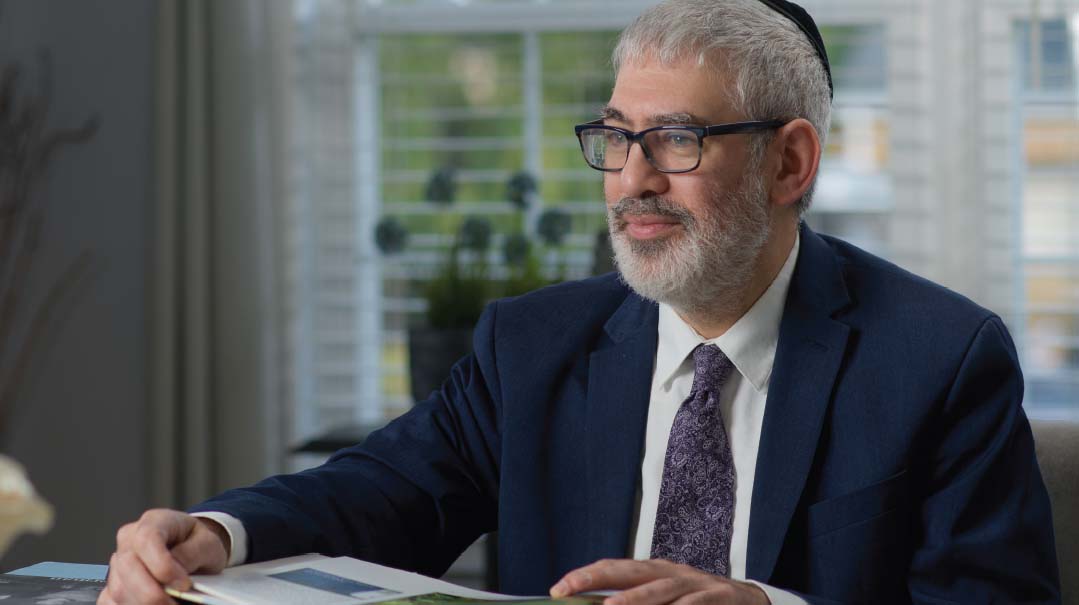Up a Family Tree

Genealogist Eric Feinstein’s meticulous sleuthing and a never-give-up attitude has uncovered family connections his clients didn’t even know existed

Photos: Naftoli Goldgrab
What does the past mean to you?
Many of us know or remember our grandparents, but what of their parents? And what of the brothers, sisters, aunts, and uncles that were a part of their lives — and by extension — a part of ours too? To some, discovering their family roots can satisfy a deep need, provide closure, or may even open new avenues for their future. Genealogist Eric Feinstein is in the business of discovering family histories and unveiling the journeys, joys, and mysteries of those who came before us.
“Not everyone has progeny, but everyone has ancestors,” he says, explaining the upsurge in interest in genealogical services. “Everyone comes from someone.”
Specializing in European archival research, Eric is able to research and document his clients’ family histories by recovering original source documents from the past, including birth, death, and marriage records, community registers, and city and town archives. His fluency in Russian, French, and German, with a working reading proficiency in Polish, Hungarian, Czech, and other Slavic languages, gives him first-hand access to the most obscure pieces of information. He also utilizes a network of researchers around the world who can track down records, physically search and document graveyards and archives, and uncover information that is unavailable online. His research, coupled with meticulous sleuthing and a never-give-up attitude, has united family members lost to one another by the Holocaust, found birth families of adopted children, and discovered relatives that his clients didn’t even know existed.
Hot on the Trail
To begin the process of tracing a client’s roots, Eric will have the client write down any details — names, dates, and relationships — that they know of, even if they don’t think of them as important. These details are anecdotal, but he’ll follow up on them and try to substantiate them with actual documentation. Often when he begins a project, he will only be able to draw one line on a family tree. As his research progresses, he’ll be able to add more branches, moving upward through the generations, with all the names and dates supported by the documents he has discovered. The second step is to reach out to all relatives the client is aware of, even if they’re complete strangers. Many times, the client is reluctant and will ask Eric to do that piece instead.
“It’s a lot of trial and error in the beginning,” he admits, especially since today it’s harder to approach people by phone. Eric will make a courtesy phone call and follow up with a letter where he will explain his goal, cite his credentials, and include a copy of any family tree he has already accessed. Most of the time, people are interested in their roots and will respond, offering any additional information they may have.
One client, Shmuel Gniwisch, who runs a hedge fund in Montreal, Canada, started looking into his family background on his own and tried to create a family tree. He wanted to research his family as a gift for his Holocaust survivor father, but he didn’t get too far. He knew his family came from Sanz (“Nowy Sacz”) in Galicia and were owners of flour and sugar mills in that region. He approached Eric to research his family tree as a gift for his Holocaust-survivor father. Originally, the family wanted to research only their direct line, but Eric advised them to expand their search. Every record that he recovers reveals different information about the family, and his goal is to deliver not only names and dates, but to show the details of the extended family and the history they built together.
One challenge in following a historical trail is that people’s knowledge is often incomplete or erroneous. The Gniwisch family thought they stemmed from the town of Sanz (Nowy Sacz), but Eric’s research found that, in fact, they lived in the nearby, smaller village of Stary Sacz (Old Sanz). He also discovered that their paternal grandmother’s birth name was not Miller, as the client had reported, but Friedman. These details redirected the search toward different source records.
Oops! We could not locate your form.






